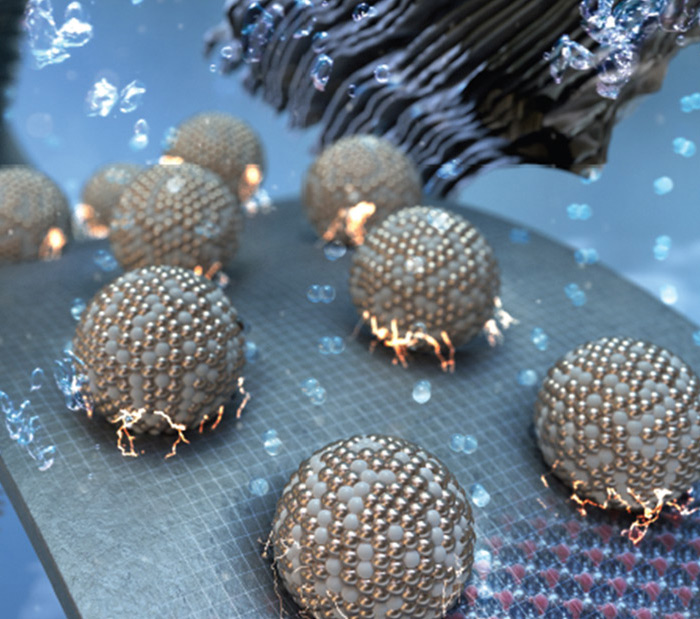Research Stories
Green Hydrogen Catalyst Material with
New MXene-Ni2P Phosphide Hybrid
Design a heterojunction material in which Ni2P nanoparticles are grown on the surface of MXene, a new 2-dimensional material, and develop a hybrid electrocatalyst capable of highly active and highly stable hydrogen generation reaction.
Chemical Engineering
Prof.
LEE, JUN YOUNG
Prof. Jung Kyu Kim, Nguyen Duong Nguyen
Prof. Jun Young Lee (School of Chemical Engineering) and Prof. Jung Kyu Kim (School of Chemical Engineering) reported his collaboration research achievements with Prof. Hyeyoung Shin (Graduate School of Energy Science and Technology, Chungnam National University): Interfacial Strain-Modulated Nanospherical Ni2P by Heteronuclei-Mediated Growth on Ti3C2Tx MXene for Efficient Hydrogen Evolution.
Since the global warming problem from usage of fossil fuel, the hydrogen fuel is getting attention due to clean and renewable properties. Among various strategies for hydrogen evolution reaction (HER), electrochemical water splitting is regarded as potential approach for zero-carbon emission process.
In general, the novel metal based materials, such as Pt, Pd, Ir and Ru, have been applied for the most efficient HER catalyst. However, the scarcity of novel metal and unstability in electrolyte properties hinder to scale-up the hydrogen production process. To replace novel metals, non-novel metal based materials have been exploited as an promising candidate for HER electrocatalysts. Among them, Ni2P has been studied as hot topic because of its highly activity HER. However, it is still far from replacing noble metal based catalyst due to its poor intrinsic poor conductivity and stability.
In this work, we demonstrated a hybrid catalyst with Ni2P and Ti3C2Tx (MXene), which consisting chemically anchored Ni2P on surface-defect engineered MXene. Using collodial synthesis, Ni2P species were in situ heteronuclei growth on surface defect point of MXene to syntehsize strongly coupled heterostructure. Notably, the significant tensile strain of the Ni2P lattice was found at the interface between Ni2P and MXene. The strain changed atom bond length and electronic structure of matrials, and it induced more preferable reaction mechanism for HER. Consequently, the Ni2P @MXene hybrid exhibit outstanding electrocataytic activity with 123.6 mV at 10mA cm-2 and long-term stability. We propose the hybridization between Ni2P and MXene open up a novel strategy for design efficient non-noble metal based catalyst.
This research achievement was selected as the cover art of journal ‘Small’ (DOI: https://doi.org/10.1002/smll.202204797)
*Interfacial Strain-Modulated Nanospherical Ni2P by Heteronuclei-Mediated Growth on Ti3C2Tx Mxene for Efficient Hydrogen Evolution (저널: Small, DOI: 10.1002/smll.202204797)
▲ A depiction of the growth of heterogeneous nuclei of 0-dimensional spherical nickel phosphide on the surface of a 2-dimensional plate-shaped MXene material. Strain occurs at the hybrid material interface to secure excellent green hydrogen production performance.
▲Cover art of journal 'Small'

